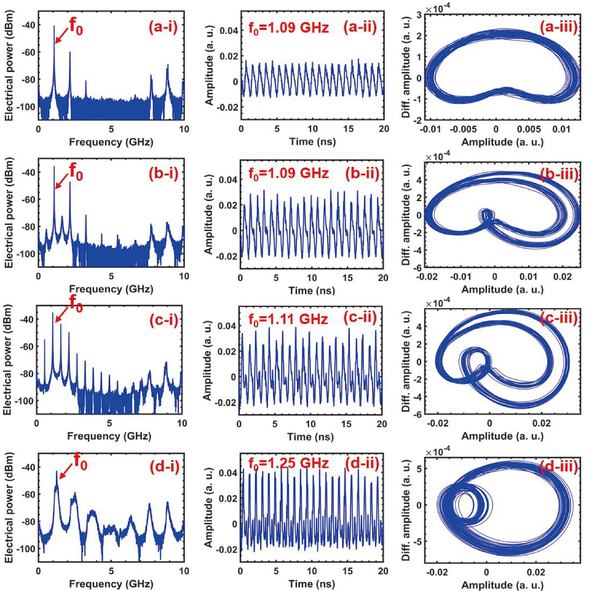Recently, SIST Prof. Cheng Wang’s group proposes a kind of Q-switched quantum-dot semiconductor laser, based on a new physical mechanism. This laser does not require any absorber section that conventional Q-switched lasers have to include. The laser with a single gain section produces self-sustained pulse oscillations under DC pump current. This result is recently reported in the journal IEEE Journal of Selected Topics in Quantum Electronics, with the title of “Intensity Noise and Pulse Oscillations of an InAs/GaAs Quantum Dot Laser on Germanium”.
Semiconductor lasers under DC pump usually produce continuous-wave light output. In order to achieve pulsed output, a saturable absorber is required to achieve either Q-switching or mode locking. This work proposes to employ InAs/GaAs quantum dot lasers epitaxially grown on germanium substrate to achieve pulse oscillation, without incorporating any saturable absorber. Through adjusting the DC pump current, the laser produces both period-one and period-two oscillations as shown in Fig. 1. These periodic oscillations are desirable both for nonlinear dynamics field and for photonic microwave applications. The physical mechanism takes advantage of the inhomogeneous broadening nature of the quantum dots. One non-lasing dot group provides saturable absorption for another lasing dot group with energy overlap, and hence leads to self Q-switching pulse oscillation. This new mechanism can significantly simplify the design of pulsed laser sources in photonic integrated circuits on silicon.
This work was finished in collaboration with Telecom Paristech, France, and with SIMIT, Chinese Academy of Science. It was financially supported by Natural Science Foundation of China,and by Shanghai Pujiang Program.
Article line:https://ieeexplore.ieee.org/stamp/stamp.jsp?tp=&arnumber=8717669

Figure 1. Electrical spectra (left), time series (middle), and phase portraits (right) at different pump currents. (a) and (d) are period-one oscillations, (b) and (c) are period-two oscillations.




 沪公网安备 31011502006855号
沪公网安备 31011502006855号


